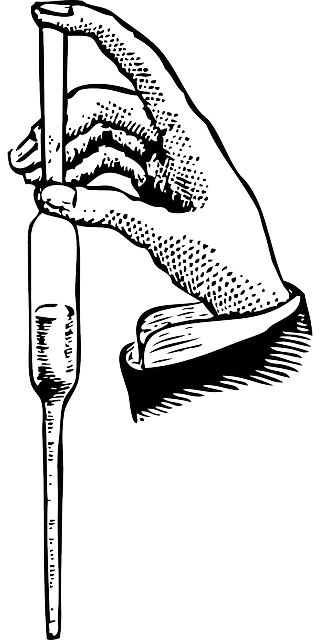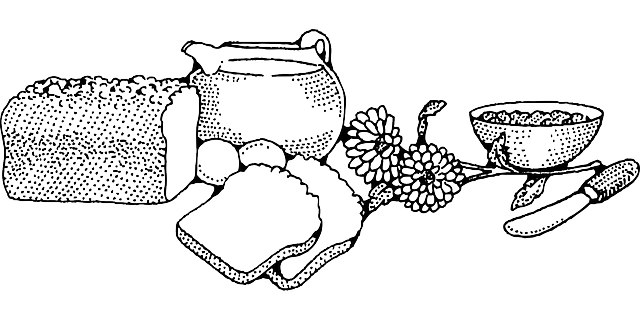التحالف العثماني الفرنسي
|
التحالفات الأجنبية لفرنسا | |||||||||||||||||||||||||||||||||||||||||||||||||||
|---|---|---|---|---|---|---|---|---|---|---|---|---|---|---|---|---|---|---|---|---|---|---|---|---|---|---|---|---|---|---|---|---|---|---|---|---|---|---|---|---|---|---|---|---|---|---|---|---|---|---|---|
| |||||||||||||||||||||||||||||||||||||||||||||||||||
التحالف العثماني الفرنسي ، والذي يعهد أيضًا التحالف الفرنسي الهجري ، هوتحالف بدأ عام 1536 بين ملك فرنسا فرانسوا الأول والسلطان العثماني سليمان القانوني، وهوالتحالف الذي قيل عنه أنه "أول تحالف غير أيديولوجي دبلوماسي من نوعه بين إمبراطوريتين مسيحية ومسلمة". تسبب هذا التحالف في إحراج فرنسا في العالم المسيحي،كارل ياكوب بوركهارت (1947) نعته بـ "التحالف الأثيم"، أو"الاتحاد الذي دنّس زهرة الزنبق والهلال". ومع ذلك، فقد خدم هذا التحالف مصالح الطرفين.
كان هذا التحالف الاستراتيجي والتكتيكي في بعض الأحيان، واحدًا من أبرز التحالفات الخارجية الفرنسية، واستمرت لأكثر من قرنين ونصف القرن من الزمان، حتى الحملة الفرنسية على مصر، وهوالتي كانت ولاية عثمانية، بين عامي 1798-1801.
الخلفية
إثر فتح الأتراك القسطنطينية في 1453 على يد محمد الثاني وتوحيد أراضي شاسعة في الشرق الأوسط تحت حكم سليم الأول، تمكن سليمان القانوني، ابن سليم، من بسط الحكم العثماني إلى صربيا في 1522. وبذلك دخلت امبراطورية هابسبورگ في نزاع مباشر مع العثمانيين.
تحالف فرانسوا الأول وسليمان القانوني
تبادل السفارات
In early July 1532, Suleiman was joined by the French ambassador Antonio Rincon in Belgrade. Antonio Rincon presented Suleiman with a magnificent four-tiered tiara, made in Venice for 115,000 ducats. Rincon also described the Ottoman camp:
"Astonishing order, no violence. Merchants, women even, coming and going in perfect safety, as in a European town. Life as safe, as large and easy as in Venice. Justice so fairly administered that one is tempted to believe that the Turks are turned Christians now, and that the Christians are turned Turks."
—Antonio Rincon, 1532.
Francis I explained to the Venetian ambassador Giorgio Gritti in March 1531 his strategy regarding the Turks:
"I cannot deny that I wish to see the Turk all-powerful and ready for war, not for himself -for he is an infidel and we are all Christians- but to weaken the power of the emperor, to compel him to make major expenses, and to reassure all the other governments who are opposed to such a formidable enemy".
—Francis I to the Venetian ambassador.
Ottoman embassies were sent to France, with the Ottoman embassy to France (1533) led by Hayreddin Barbarossa, and the Ottoman embassy to France (1534) led by representatives of Suleiman.
العمليات المشهجرة (1534-35)
Suleiman ordered Barbarossa to put his fleet at the disposition of Francis I to attack Genoa and the Milanese. In July 1533 Francis received Ottoman representatives at Le Puy, and he would dispatch in return Antonio Rincon to Barbarossa in North Africa and then to the Asia Minor. Suleiman explained that "he could not possibly abandon the King of France, who was his brother". The Franco-Ottoman alliance was by then effectively made.
In 1534 a Turkish fleet sailed against the Habsburg Empire at the request of Francis I, raiding the Italian coast and finally meeting with representatives of Francis in southern France. The fleet went on to capture Tunis in the فتح تونس (1534) on 16 August 1534 and continued raiding the Italian coast with the support of Francis I. In a counter-attack however, Charles V dislodged them in the فتح تونس (1535).
السفارة الدائمة لجان دلا فوريه (1535-37)
الاتفاقيات التجارية والدينية
المعاهدات، أوالتعهدات، تبودلت بين البلدين بدءاً من سنة 1528 و1536. الهزيمة في فتح تونس (1535) على يد أندريا دوريا حفزت الدولة العثمانية على الدخول في تحالف رسمي مع فرنسا. وأُرسِل السفير جان دلا فوريه إلى اسطنبول، ولأول مرة تمكن من حتى يصبح سفيراً دائماً في البلاط العثماني ويفاوض معاهدات.
Captain Polin in Constantinople (1544)
Five French galleys under Captain Polin, including the superb Réale, accompanied Barbarossa's fleet, on a diplomatic mission to Suleiman. The French fleet accompanied Barbarossa during his attacks on the west coast of Italy on the way to Constantinople, as he laid waste to the cities of Porto Ercole, Giglio, Talamona, Lipari and took about 6,000 captives, but separated in Sicily from Barbarossa's fleet to continue alone to the Ottoman capital.Jerôme Maurand, a priest of Antibes who accompanied Polin and the Ottoman fleet in 1544, wrote a detailed account in Itinéraire d'Antibes à Constantinonple. They arrived in Constantinople onعشرة August 1544 to meet with Suleiman and give him an account of the campaign. Polin was back to Toulon on 2 October 1544.
الحملة المشهجرة في المجر (1543–1544)
On land Suleiman was concomitantly fighting for the conquest of Hungary in 1543, as a part of the Little War. French troops were supplied to the Ottomans on the Central European front: in Hungary, a French artillery unit was dispatched in 1543–1544 and attached to the Ottoman Army. Following major sieges such as the Siege of Esztergom (1543), Suleiman took a commanding position in Hungary, obtaining the signature of the Truce of Adrianople with the Habsburg in 1547.
Besides the powerful effect of a strategic alliance encircling the Habsburg Empire, combined tactical operations were significantly hampered by the distances involved, the difficulties in communication, and the unpredictable changes of plans on one side or the other. From a financial standpoint, fiscal revenues were also generated for both powers through the ransoming of enemy ships in the Mediterranean. The French Royal House also borrowed large amounts of gold from the Ottoman banker Joseph Nasi and the Ottoman Empire, amounting to around 150,000 écus as of 1565, the repayment of which became contentious in the following years.
الدعم الفرنسي في الحرب الصفوية العثمانية (1547)
In 1547, when Suleiman the Magnificent attacked Persia in his second campaign of the Ottoman-Safavid War (1532–1555), France sent him the ambassador Gabriel de Luetz to accompany him in his campaign. Gabriel de Luetz was able to give decisive military advice to Suleiman, as when he advised on artillery placement during the Siege of Vān.
الأعقاب
The alliance provided strategic support to, and effectively protected, the kingdom of France from the ambitions of Charles V. It also gave the opportunity for the Ottoman Empire to become involved in European diplomacy and gain prestige in its European dominions. According to historian Arthur Hassall the consequences of the Franco-Ottoman alliance were far-reaching: "The Ottoman alliance had powerfully contributed to save France from the grasp of Charles V, it had certainly aided Protestantism in Germany, and from a French point of view, it had rescued the North German allies of Francis I."'
الجدال السياسي
Side effects included a lot of negative propaganda against the actions of France and its "unholy" alliance with a Muslim power. Charles V strongly appealed to the rest of Europe against the alliance of Francis I, and caricatures were made showing the collusion between France and the Ottoman Empire. In the late sixteenth century, Italian political philosopher Giovanni Botero referred to the alliance as "a vile, infamous, diabolical treaty" and blamed it for the extinction of the Valois dynasty. Even the French Huguenot Francois de La Noue denounced the alliance in a 1587 work, claiming that "this confederation has been the occasion to diminish the glory and power of such a flourishing kingdom as France."
Numerous authors intervened to take the defense of the French king for his alliance. Authors wrote about the Ottoman civilization, such as Guillaume Postel or Christophe Richer, in sometimes extremely positive ways. In the 1543 work Les Gestes de Francoys de Valois, Etienne Dolet justified the alliance by comparing it to Charles V's relations with Persia and Tunis. Dolet also claimed that it should not be "forbidden for a prince to make alliance and seek intelligence of another, whatever creed or law he may be." The author François de Sagon wrote in 1544 Apologye en défense pour le Roy, a text defending the actions of Francis I by drawing parallels with the parable of the Good Samaritan in the Bible, in which Francis is compared to the wounded man, the Emperor to the thieves, and Suleiman to the Good Samaritan providing help to Francis.Guillaume du Bellay and his brother Jean du Bellay wrote in defense of the alliance, at the same time minimizing it and legitimizing on the ground that Francis I was defending himself against an aggression.Jean de Montluc used examples from Christian history to justify the endeavour to obtain Ottoman support.Jean de Montluc's brother Blaise de Montluc argued in 1540 that the alliance was permissible because "against one's enemies one can make arrows of any kind of wood." In 1551, Pierre Danes wrote Apologie, faicte par un serviteur du Roy, contre les calomnies des Impériaulx: sur la descente du Turc.
التبادلات الثقافة والفهمية
Cultural and scientific exchanges between France and the Ottoman Empire flourished. French scholars such as Guillaume Postel or Pierre Belon were able to travel to Asia Minor and the Middle East to collect information.
Scientific exchange is thought to have occurred, as numerous works in Arabic, especially pertaining to astronomy were brought back, annotated and studied by scholars such as Guillaume Postel. Transmission of scientific knowledge, such as the Tusi-couple, may have occurred on such occasions, at the time when Copernicus was establishing his own astronomical theories.
Books, such as the Muslim holy text, the Quran, were brought back to be integrated in Royal libraries, such as the Bibliothèque Royale de Fontainebleau, to create a foundation for the Collège des lecteurs royaux, future Collège de France. French novels and tragedies were written with the Ottoman Empire as a theme or background. In 1561, Gabriel Bounin published La Soltane, a tragedy highlighting the role of Roxelane in the 1553 execution of Mustapha, the elder son of Suleiman. This tragedy marks the first time the Ottomans were introduced on stage in France.
التجارة الدولية
Strategically, the alliance with the Ottoman Empire also allowed France to offset to some extent the Habsburg Empire's advantage in the New World trade, and French trade with the eastern Mediterranean through Marseille indeed increased considerably after 1535. After the Capitulations of 1569, France also gained precedence over all other Christian states, and her authorization was required for when another state wished to trade with the Ottoman Empire.
Military alliance under Henry II
The son of Francis I, Henry II, also sealed a treaty with Suleyman in order to cooperate against the Austrian Navy. This was triggered by theثمانية September 1550 conquest of Mahdiya by the Genoese Admiral Andrea Doria, for the account of Charles Quint. The alliance allowed Henry II to push for French conquests towards the Rhine, while a Franco-Ottoman fleet defended southern France.
Support of Protestantism under Charles IX
Ottoman power was also used by the French in the religious conflicts on the European scene. In 1566, under Charles IX, the French ambassador to the Ottoman Empire intervened in favour of the Dutch Revolt against the Spanish Empire, after a request for Ottoman help by William I of Orange, so that a Dutch-Ottoman alliance was considered and a letter was sent from Suleiman the Magnificent to the "Lutherans" in Flanders, offering troops at the time they would request, and claiming that he felt close to them, "since they did not worship idols, believed in one God and fought against the Pope and Emperor". The Ottoman Empire was indeed known at that time for its religious tolerance. Various religious refugees, such as the Huguenots, some Anglicans, Quakers, Anabaptists or even Jesuits or Capuchins and Jews (Marranos) were able to find refuge at Constantinople and in the Ottoman Empire, where they were given right of residence and worship. Further, the Ottomans supported the Calvinists in Transylvania and Hungary but also in France. The contemporary French thinker Jean Bodin wrote:
The great emperor of the Turks does with as great devotion as any prince in the world honour and observe the religion by him received from his ancestors, and yet detests he not the strange religions of others; but on the contrary permits every man to live according to his conscience: yes, and that more is, near unto his palace at Pera, suffers four diverse religions viz. that of the Jews, that of the Christians, that of the Grecians, and that of the Mahometans.
—Jean Bodin.
The Ottoman Empire was at the height of its power, but for the forty years after these events, France would become embroiled in the bitter French Wars of Religion, and Ottoman power would start to slowly weaken after the 1571 Battle of Lepanto.
Ottoman-Persian diplomatic rivalry in Europe
The conflict between the Ottomans and the Persians led the latter to try to forge a counter-acting Habsburg-Persian alliance with other European powers against the Ottoman Empire, particularly with the Habsburg Empire, Italy and Habsburg Spain. This plan was formalized by two major diplomatic endeavours: the Persian embassy to Europe (1599–1602), and the Persian embassy to Europe (1609–1615). The results however seem to have been limited.
Continuation
For the three centuries following the beginning of the alliance, the Ottoman effectively continued to respect their commitment to protect Christian communities in their realm. The French kings succeeding to Francis I also generally maintained their pro-Ottoman policy. Numerous Ottoman embassies were received at the French court: from Suleiman to Francis I in 1533, from Suleiman to Charles IX in 1565 (embassy of Hajji Murad), from Selim II to Charles IX in 1571, from Murad III to Henry III in 1581.
Henry IV
Even before Henry IV's accession to the throne, the French Huguenots were in contact with the Moriscos in plans against Habsburg Spain in the 1570s. Around 1575, plans were made for a combined attack of Aragonese Moriscos and Huguenots from Béarn under Henri de Navarre against Spanish Aragon, in agreement with the Bey of Algiers and the Ottoman Empire, but these projects foundered with the arrival of John of Austria in Aragon and the disarmament of the Moriscos. In 1576, a three-pronged fleet from Constantinople was planned to disembark between Murcia and Valencia while the French Huguenots would invade from the north and the Moriscos accomplish their uprising, but the Ottoman fleet failed to arrive.
Henry IV continued the policy of Franco-Ottoman alliance and received an embassy from Mehmed III in 1601. In 1604, a "Peace Treaty and Capitulation" was signed between Henry IV and the Ottoman Sultan Ahmet I, giving numerous advantages to France in the Ottoman Empire. An embassy was sent to Tunisia in 1608, led by François Savary de Brèves.
Cultural exchanges
Continued support from Louis XV to the Revolution
السفارات العثمانية
In 1796, General Aubert-Dubayet was sent to the Ottoman court with artillery equipment, and French artillerymen and engineers to help with the development of the Ottoman arsenals and foundries. Infantry and cavalry officers were also to train the Spahis and Janissaries, but they were frustrated by the opposition of the Janissaries. This relationship would sour with the ascent of Napoleon I.
Diplomatic and technical collaboration
Throughout the period, contacts were varied and multiple. France was willing to help in order to maintain strategic balance in Europe. Through its intervention and that of Ambassador Louis de Villenneuve in negotiating the 1739 Treaty of Belgrade, France effectively supported the Ottoman Empire into maintaining a strong presence in Europe against Austria for several more decades, and "re-emerged in its traditional role as the Ottomans' best friend in Christendom".
Also, as the Ottoman Empire was losing ground militarily during the 18th century, it made numerous efforts to recruit French experts for its modernization. The French officer and adventurer Claude-Alexandre de Bonneval (1675–1747) went in the service of Sultan Mahmud I, converted to Islam, and endeavoured to modernize the Ottoman army, creating cannon foundries, powder and musket factories and a military engineering school. Another officer François Baron de Tott was involved in the reform efforts for the Ottoman military. He succeeded in having a new foundry built to make howitzers, and was instrumental in the creation of mobile artillery units. He built fortifications on the Bosphorus and started a naval science course that laid the foundation stone for the later Turkish Naval Academy.
Louis XVI
Under Louis XVI from 1783, a French Military Mission was sent to the Ottoman Empire to train the Turks in naval warfare and fortification building. Up to the French revolution in 1789, about 300 French artillery officers and engineers were active in the Ottoman Empire to modernize and train artillery units. From 1784, Antoine-Charles Aubert reached Constantinople with 12 experts. The same year, French engineering officers André-Joseph Lafitte-Clavé and Joseph-Monnier de Courtois arrived to instruct engineering drawings and techniques in the new Turkish engineering school Mühendishâne-i Hümâyûn established by the Grand-Vizier Halil Hamid Pasha. Mostly French textbooks were used on mathematics, astronomy, engineering, weapons, war techniques and navigation. However, all instructors had to leave with the end of the Franco-Ottoman alliance in 1798.
Revolutionary France
This policy initially continued during the French Revolution, as France was clearly in need of an eastern diversion against its continental enemies. For the Ottoman Empire, the French Revolution was a godsend, since conflict between European powers could only weaken the states that were its traditional enemies. For Sultan Selim III, this was a golden opportunity to modernize, and achieve the "New Order" (Nizam-i Jedid). He established permanent embassies in several European countries, and turned to France for help. Various experts were sent, and in 1795, French envoy extraordinaire Raymond de Verninac-Saint-Maur attempted to establish a Treaty of Alliance. A young artillery officer by the name of Napoleon Bonaparte was also to be sent to Constantinople in 1795 to help organize Ottoman artillery. He did not go, for just days before he was to embark for the Near East he proved himself useful to the Directory by putting down a Parisian mob in the whiff of grapeshot and was kept in France.
In 1796, General Aubert-Dubayet was sent to the Ottoman court with artillery equipment, and French artillerymen and engineers to help with the development of the Ottoman arsenals and foundries. Infantry and cavalry officers were also to train the Spahis and Janissaries, but they were frustrated by the opposition of the Janissaries. This relationship would sour with the ascent of Napoleon I.
الخاتمة: ناپليون الأول
With the advent of Napoleon I, France adopted a strongly expansionist policy which put it in direct contact with the Ottoman Empire. Following the Treaty of Campo Formio in 1797, France acquired possessions in the Mediterranean such as the Ionian islands as well as former Venetian bases on the coast of Albania and Greece. Relations with the Ottoman Empire became all of a sudden strained. Napoleon Bonaparte invaded Egypt in 1798 and fought against the Ottomans to establish a French presence in the Middle East, with the ultimate dream of linking with Tippoo Sahib in India. Although the long period of Franco-Ottoman friendship was now over, Napoleon I still claimed great respect for Islam, and appealed to the long history of friendly relations between the Ottoman Empire and France:
"Peoples of Egypt, you will be told that I have come to destroy your religion: do not believe it! Answer that I have come to restore your rights and punish the usurpers, and that, more than the Mamluks, I respect God, his Prophet and the Quran... Is it not we who have been through the centuries the friends of the Sultan?"
—Napoleon to the Egyptians.
Napoleon had toppled the Mamluk beys, the effective rulers of Egypt under nominal Ottoman suzerainty, but still raised the French flag side-by-side with the Ottoman banner throughout the Egyptian territory, claiming his love for Islam, and saying that they were saving the Ottomans from the Mamluks. Selim III however immediately declared a Jihad and sought the help of Britain and Russia, who both felt both threatened by Napoleon's conquests. On January 9, 1799, the Ottoman Empire allied with Russia, and two days later with Great Britain.
Britain took the opportunity to ally with the Ottoman Empire in order to repel Napoleon's invasion, intervening militarily during the Siege of Acre with Admiral William Sidney Smith in 1799, and under Ralph Abercromby at the Battle of Abukir in 1801. By 1802, the French were completely vanquished in the Middle East.
A final, but short-lived, alliance
Soon however, in 1803, France and Great Britain were again at war, and Napoleon went to great lengths to try to convince the Ottoman Empire to fight against Russia in the Balkans and join his anti-Russian coalition. On its side, Russia vied for Ottoman favour, and succeeded in signing a Treaty of Defensive Alliance in 1805.
Napoleon continued his efforts to win the Ottoman Empire to his cause. He sent General Horace Sebastiani as envoy extraordinary. Napoleon promised to help the Ottoman Empire recover lost territories. He wrote to the Sultan:
"Are you blind to your own interests – have you ceased to reign? (...) If Russia has an army of 15,000 men at Corfu, do you think that it is directed against me? Armed vessels have the habit of hastening to Constantinople. Your dynasty is about to descend into oblivion... Trust only your true friend, France"
—Letter from Napoleon to Selim III.
In February 1806, following Napoleon's remarkable victory in the Battle of Austerlitz in December 1805 and the ensuing dismemberment of the Holy Roman Empire, Selim III finally refused to ratify the Russian and British alliances, and recognized Napoleon as Emperor, formally opting for an alliance with France "our sincere and natural ally", and war with Russia and Britain. He also sent Muhib Efendi to Paris as ambassador (1806–1811). Selim III's decisions in favour of France triggered the 1806 Russo-Turkish War and the 1807 Anglo-Turkish War. Selim III repelled the British fleet of John Thomas Duckworth with the help of Sebastiani, but lost several major encounters against Russia, and he was finally toppled by his Janissaries as he was trying to reform his army, and replaced by Mustafa IV. Mustafa IV however, persisted with the Franco-Ottoman alliance, and sent ambassador Halet Efendi to Paris to work out the details. Concurrently, Napoleon also formed a Franco-Persian alliance in 1807, through the signature of the Treaty of Finkenstein.
In a final reversal however, Napoleon I finally vanquished Russia at the Battle of Friedland in July 1807. The alliance between France and the Ottoman Empire was maintained, and a peace settlement was brokered between Russia and the Ottomans, but the territories the Ottomans had been promised (Moldavia and Wallachia) through the Treaty of Tilsit were never returned, although the Ottomans themselves had complied with their part of the agreement by moving their troops south of the Danube. Faced with betrayal by Russia, and the failure of France to have the agreement enforced, the Ottoman Empire, now ruled by Mahmud II, finally signed onخمسة January 1809 a Treaty of Peace, Commerce and Secret Alliance with Great Britain, which was now at war with both France and Russia. In 1812, through the Treaty of Bucharest, the Ottoman Empire and Russia agreed to make peace, just as Russia was anxious to liberate this southern front in anticipation of Napoleon's Invasion of Russia, with Russia keeping Bessarabia and the Ottomans regaining Wallachia and Moldavia. In the post-Napoleonic world, at the 1815 Congress of Vienna, the Ottoman Empire was still recognized as an essential part of the European status quo.
حرب القرم وسوريا
In the Crimean War, a French-British-Ottoman alliance against Russia was signed on 12 March 1854.
In another example of cooperation, in 1860, France later intervened in the Ottoman territory of Syria, with the agreement of the Ottoman Empire, with the objective to fulfill its mission to protect Christians in the Middle East, following massacres of Maronite Christians. At that time, France, led by Napoleon III, claimed to continue its ancient role as protector of Christians in the Ottoman Empire.
المراجع
- ^ "the first non-ideological diplomatic alliance of its kind between a Christian and non-Christian empire" Kann, p.62
- ^ Miller (1927), p. 2 خطأ استشهاد: وسم
<ref>غير صالح؛ الاسم "Miller, p.2" معهد أكثر من مرة بمحتويات مختلفة. - ^ C. J. Burckhardt, Richelieu vol. 2 (1947; English edition 1970); cited after Avner Ben-Zaken, Cross-Cultural Scientific Exchanges in the Eastern Mediterranean, 1560–1660 (2010), p. 209. A contemporary Swiss song by Benedikt Gletting called it the union of "the dolphin and the crocodile". R. Schwarzenbach, Schweizerisches Archiv für Volksunde 74 (1978), p. 6
- ^ Merriman, p.133.
- ^ Roger Bigelow Merriman Suleiman the Magnificent 1520-1566 READ BOOKS, 2007 ISBN 1-4067-7272-0, p.132
- ^ Garnier, p.52
- ^ by Kenneth M. Setton p.362
- ^ Margaret of Angouleme - Queen of Navarre by A. Mary F.Robinson p.158 [1]
- ^ R. J. Knecht p.224
- ^ Crowley, p.66
- ^ Roger Bigelow Merriman p.139
- ^ Roger Bigelow Merriman p.140
- ^ William E. Watson p.11
- ^ by Sir Adolphus William Ward p.68
- ^ History of the Ottoman Empire and modern Turkey Ezel Kural Shaw p.97ff [2]
- ^ Yann Bouvier, p. 56-59
-
^ خطأ استشهاد: وسم
<ref>غير سليم؛ لا نص تم توفيره للمراجع المسماةCrowley, p.75 - ^ Crowley, p.75-79
- ^ Garnier, p.234
- ^ Garnier, p.240
- ^ خطأ استشهاد: وسم
<ref>غير سليم؛ لا نص تم توفيره للمراجع المسماةEurope' p.111 -
^ خطأ استشهاد: وسم
<ref>غير سليم؛ لا نص تم توفيره للمراجع المسماةIslam p.328 - ^ Elgood, Robert (November 15, 1995). "Firearms of the Islamic World: In the Tareq Rajab Museum, Kuwait". Bloomsbury Academic – via Google Books.
- ^ Setton, Kenneth Meyer (January 4, 1984). "The Papacy and the Levant, 1204-1571". American Philosophical Society – via Google Books.
- ^ The Cambridge history of Iran by William Bayne Fisher p.384ff
- ^ Hassall, Arthur. "Louis XIV amp the Zenith of the French Monarchy" – via Google Books.
- ^ Ecouen Museum exhibit
- ^ Giovanni Botero, The Reason of State, Trans. P.J. Waley and D.P. Waley (New Haven: Yale U. P., 1956) 223-24.
- ^ Francois de la Noue, Discours Politiques et Militaires (Geneve: Librairie Droz, 1967) 428.
- ^ "Gallica". gallica.bnf.fr.
- ^ Armstrong, Elizabeth; Armstrong, Elizabeth (Tyler); Forbes, Elizabeth; Armstrong, Elizabeth Tyler (January 4, 1954). "Robert Estienne, Royal Printer". CUP Archive – via Google Books.
- ^ Dyer, Thomas Henry (January 4, 1861). "The History of Modern Europe from the Fall of Constantinople: In 1453, to the War in the Crimea, in 1857". J. Murray – via Google Books.
- ^ Rouillard, Clarence D. The Turk in French History, Thought and Literature, 1520–1660 (Paris: Boivin & Compagnie, 1973) 358.
- ^ "science1.html". columbia.edu.
- ^ Tilley, Arthur Augustus (December 4, 2008). "The Literature of the French Renaissance". BiblioBazaar – via Google Books.
- ^ "Penny Cyclopaedia of the Society for the Diffusion of Useful Knowledge" – via books.google.com.
- ^ "Anti-Italianism in Sixteenth-century France" – via books.google.com.
-
^ خطأ استشهاد: وسم
<ref>غير سليم؛ لا نص تم توفيره للمراجع المسماةAuJvd2Tyt8C p.327 - ^ Bulut, Mehmet (January 4, 2001). "Ottoman-Dutch Economic Relations in the Early Modern Period 1571-1699". Uitgeverij Verloren – via Google Books.
- ^ Karpat, Kemal H. (January 4, 1974). "The Ottoman State and Its Place in World History: Introduction". BRILL – via Google Books.
- ^ Miller, Roland E. (January 4, 2005). "Muslims and the Gospel: Bridging the Gap : a Reflection on Christian Sharing". Kirk House Publishers – via Google Books.
- ^ Goofman, p.110
- ^ Goffman, p.111
- ^ Goffman p.111
-
^ خطأ استشهاد: وسم
<ref>غير سليم؛ لا نص تم توفيره للمراجع المسماةDavies26 - ^ "East Encounters West" – via books.google.com.
-
^ خطأ استشهاد: وسم
<ref>غير سليم؛ لا نص تم توفيره للمراجع المسماةGJjSvehY5MC p.311 - ^ خطأ استشهاد: وسم
<ref>غير سليم؛ لا نص تم توفيره للمراجع المسماةLea -
^ خطأ استشهاد: وسم
<ref>غير سليم؛ لا نص تم توفيره للمراجع المسماةU-kQJr-D_ikC p.343 - ^ "Dance as Text" – via books.google.com.
- ^ "The Exotic In Western Music" – via books.google.com.
- ^ ".
- ^ "The Regency of Tunis and the Ottoman Porte, 1777-1814" – via books.google.com.
- ^ Aksan, Virginia H. (January 4, 2007). "Ottoman Wars 1700-1870: An Empire Besieged". Longman/Pearson – via Google Books.
- ^ Creasy, Sir Edward Shepherd (January 4, 1856). "History of Ottoman Turks: From the Beginning of Their Empire to the Present Time. Chiefly Founded on Von Hammer". R. Bentley – via Google Books.
- ^ Karsh, p.9
-
^ خطأ استشهاد: وسم
<ref>غير سليم؛ لا نص تم توفيره للمراجع المسماةMiller, p.3 - ^ "An Economic and Social History of the Ottoman Empire" – via books.google.com.
- ^ Ezel Kural Shaw p.255".
- ^ "From Louis XIV to Napoleon" – via books.google.com.
- ^ Vlahakis, George; Malaquias, Isabel Maria Coelho de Oliveira; Brooks, Nathan M.; Wright, David; Gunergun, Feza; Regourd, M. Francois (January 4, 2006). "Imperialism and Science: Social Impact and Interaction". ABC-CLIO – via Google Books.
- ^ A ́goston, Ga ́bor; Masters, Bruce Alan (May 21, 2010). "Encyclopedia of the Ottoman Empire". Infobase Publishing – via Google Books.
- ^ Karsh, Efraim; Karsh, Inari (January 4, 2001). "Empires of the Sand: The Struggle for Mastery in the Middle East, 1789-1923". Harvard University Press – via Google Books.
- ^ Hamilton, Alastair; Groot, Alexander Hendrik de; Boogert, Maurits H. Van Den (January 4, 2000). "Friends and Rivals in the East: Studies in Anglo-Dutch Relations in the Levant from the Seventeenth to the Early Nineteenth Century". BRILL – via Google Books.
- ^ "Memoirs of Napoleon Bonaparte". Forgotten Books – via Google Books.
- ^ Lehmanowsky, John Jacob (January 4, 1832). "History of Napoleon, Emperor of the French, King of Italy, Etc". John A.M. Duncanson – via Google Books.
- ^ Watson, William E. (January 4, 2003). "Tricolor and Crescent: France and the Islamic World". Greenwood Publishing Group – via Google Books.
- ^ Karsh, p.10
- ^ Karsh, p.11
- ^ Karsh, p.12
- ^ Aksan, Virginia H. (January 4, 2007). "Ottoman Wars 1700-1870: An Empire Besieged". Longman/Pearson – via Google Books.
- ^ Karsh, p.13-14
- ^ "The Islamic World in Decline" – via books.google.com.
- ^ Karsh, p.14
- ^ Karsh, p.15
- ^ "Turkish Foreign Policy, 1774-2000" – via books.google.com.
- ^ "Why Wars Widen" – via books.google.com.
- ^ "Just War Or Just Peace?" – via books.google.com.
- ^ "France Overseas" – via books.google.com.
انظر أيضا
- الحروب العثمانية الصفوية
- الحروب العثمانية في أوروبا
- الحلف النمساوي الصفوي (حلف الهابسبورگ والفرس)
















